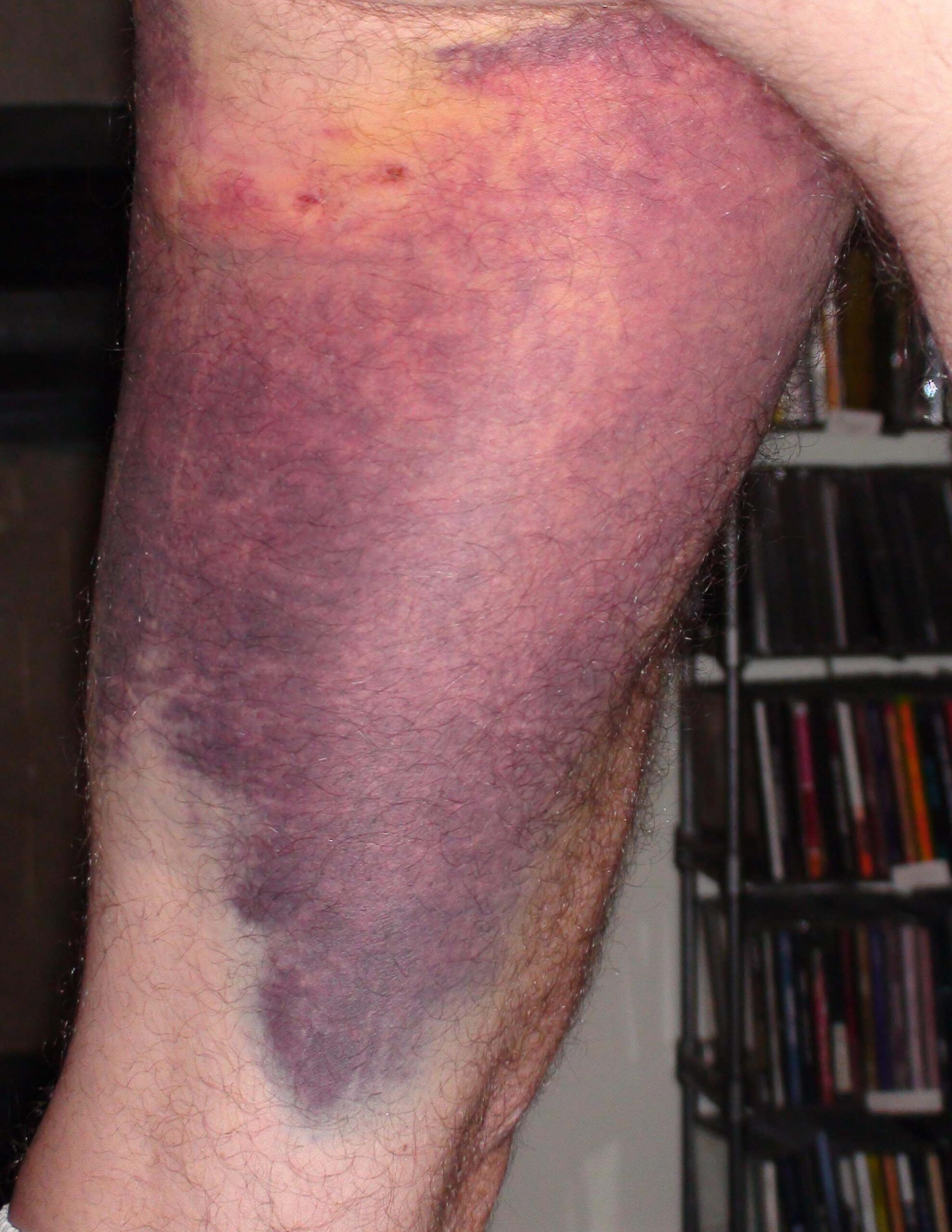What are the symptoms of a thigh contusion?
A thigh contusion, commonly referred to as a thigh bruise, results from a direct blow or trauma to the thigh muscle, causing bleeding and swelling within the muscle tissue. Symptoms of a thigh contusion include:
- Pain: Immediate and localized pain at the site of the impact, which may be sharp or throbbing.
- Swelling: Noticeable swelling in the thigh area due to fluid and blood accumulation in the muscle tissue.
- Bruising: Discoloration of the skin, which may start as red or purple and progress to blue, green, or yellow as the bruise heals.
- Tenderness: Sensitivity or tenderness to touch in the affected area.
- Limited Range of Motion: Difficulty moving the affected leg or discomfort when attempting to move the thigh due to pain and swelling.
- Muscle Stiffness: Stiffness or tightness in the thigh muscle, which can make it hard to stretch or flex the leg.
- Warmth: Increased warmth in the area of the contusion due to inflammation and increased blood flow.
In severe cases, a thigh contusion can lead to more significant symptoms, such as:
- Severe Pain: Intense pain that may interfere with daily activities or movement.
- Difficulty Walking: Trouble walking or bearing weight on the affected leg due to pain and swelling.
- Hematoma Formation: A collection of blood outside the blood vessels, forming a noticeable lump or mass under the skin.
If symptoms are severe or if there is concern about a more serious injury, such as a muscle tear or fracture, it is important to seek medical attention. Treatment for a thigh contusion typically includes rest, ice application, compression, and elevation (R.I.C.E.), along with pain management and gradual return to activity.
What are the causes of a thigh contusion?
A thigh contusion is caused by a direct impact or trauma to the thigh muscle, which leads to bruising and internal bleeding. The primary causes include:
- Sports Injuries: Common in contact sports such as football, soccer, hockey, or martial arts, where players can experience direct blows to the thigh from opponents, equipment, or falls.
- Accidents: Falls, car accidents, or any other type of accident that results in a direct impact to the thigh.
- Falls: Accidental falls onto a hard surface or onto the thigh itself can cause a contusion.
- Blunt Trauma: Any blunt object striking the thigh, such as during a collision or being hit by an object, can cause a contusion.
- Direct Blows: Direct strikes to the thigh from various sources, including sports equipment, tools, or other objects, can lead to bruising.
- Repetitive Impact: Repeated minor impacts or pressure on the thigh, such as from running or jumping, can occasionally contribute to contusions, though this is less common.
The force from the impact damages blood vessels in the muscle tissue, leading to bleeding and swelling within the affected area, which causes the symptoms associated with a thigh contusion.
What is the treatment for a thigh contusion?
Treatment for a thigh contusion focuses on relieving pain, reducing swelling, and promoting healing. Here are some common approaches:
- Rest: Avoid activities that could aggravate the injury. Resting the affected leg helps prevent further damage and allows the muscle to heal.
- Ice Application: Apply ice or a cold pack to the contusion for 15-20 minutes every 1-2 hours during the first 48 hours after the injury. This helps reduce swelling and numb the pain. Be sure to place a cloth between the ice and the skin to avoid frostbite.
- Compression: Use an elastic bandage or compression wrap to help control swelling. Ensure that the bandage is snug but not too tight, as excessive compression can impair circulation.
- Elevation: Elevate the affected leg above the level of the heart as much as possible to reduce swelling. This can be done by propping the leg up with pillows when sitting or lying down.
- Pain Management: Over-the-counter pain relievers, such as acetaminophen or ibuprofen, can help manage pain and reduce inflammation. Follow the dosage instructions on the label and consult a healthcare provider if you have any concerns or existing health conditions.
- Gentle Stretching and Strengthening: Once the acute pain and swelling have decreased, gentle stretching and strengthening exercises can help restore range of motion and prevent stiffness. Start with light, non-painful movements and gradually increase intensity as tolerated.
- Avoid Heat: During the initial 48 hours, avoid applying heat to the contusion, as this can increase swelling. After the initial period, heat may be used to relax tight muscles and improve circulation if recommended by a healthcare provider.
- Monitoring: Keep an eye on the contusion for any signs of complications, such as severe pain, increasing swelling, or difficulty moving the leg. If symptoms worsen or do not improve, seek medical advice.
- Medical Evaluation: If the contusion is severe, if there are concerns about a possible muscle tear or fracture, or if the symptoms do not improve with home care, consult a healthcare provider for a thorough evaluation and treatment plan.
These measures can help manage a thigh contusion effectively and support the healing process.

Leave a Reply
You must be logged in to post a comment.